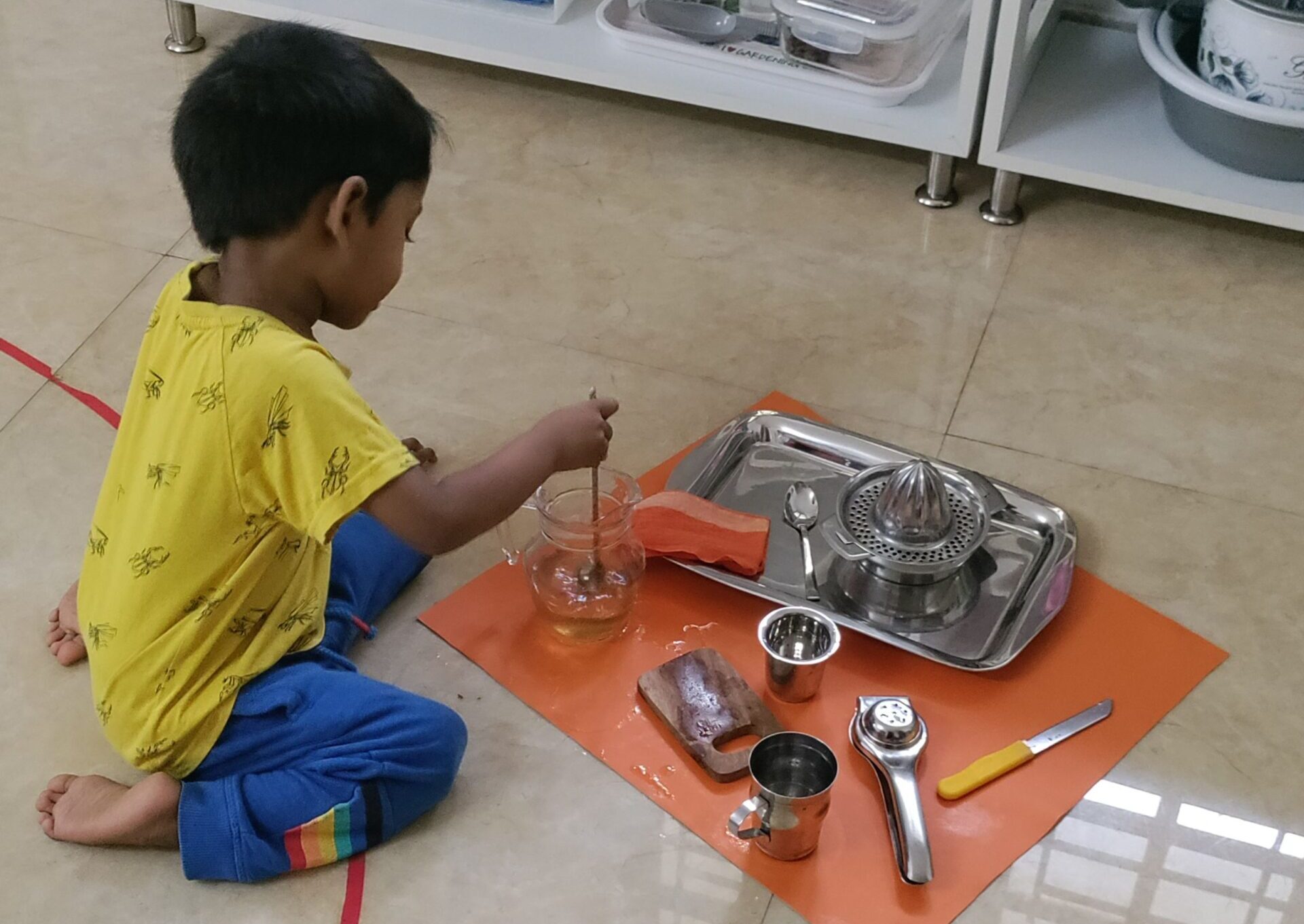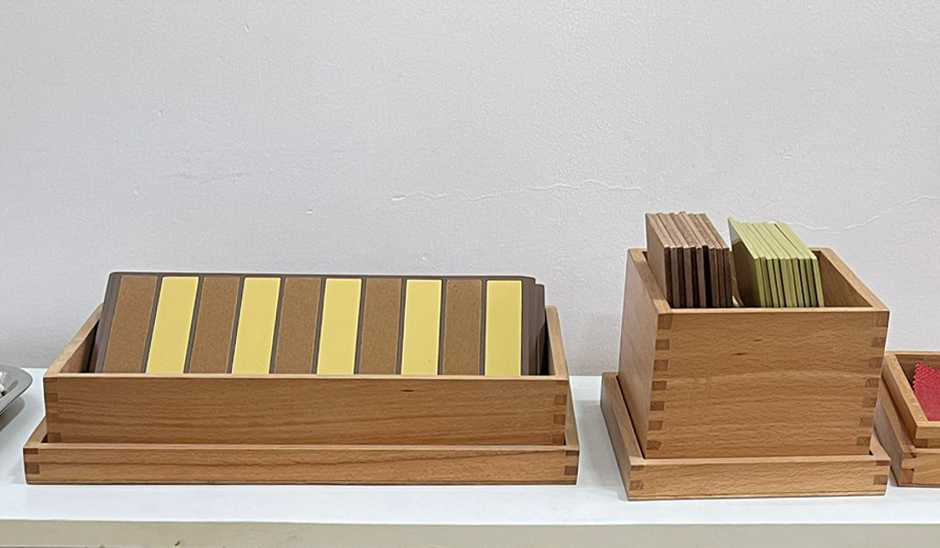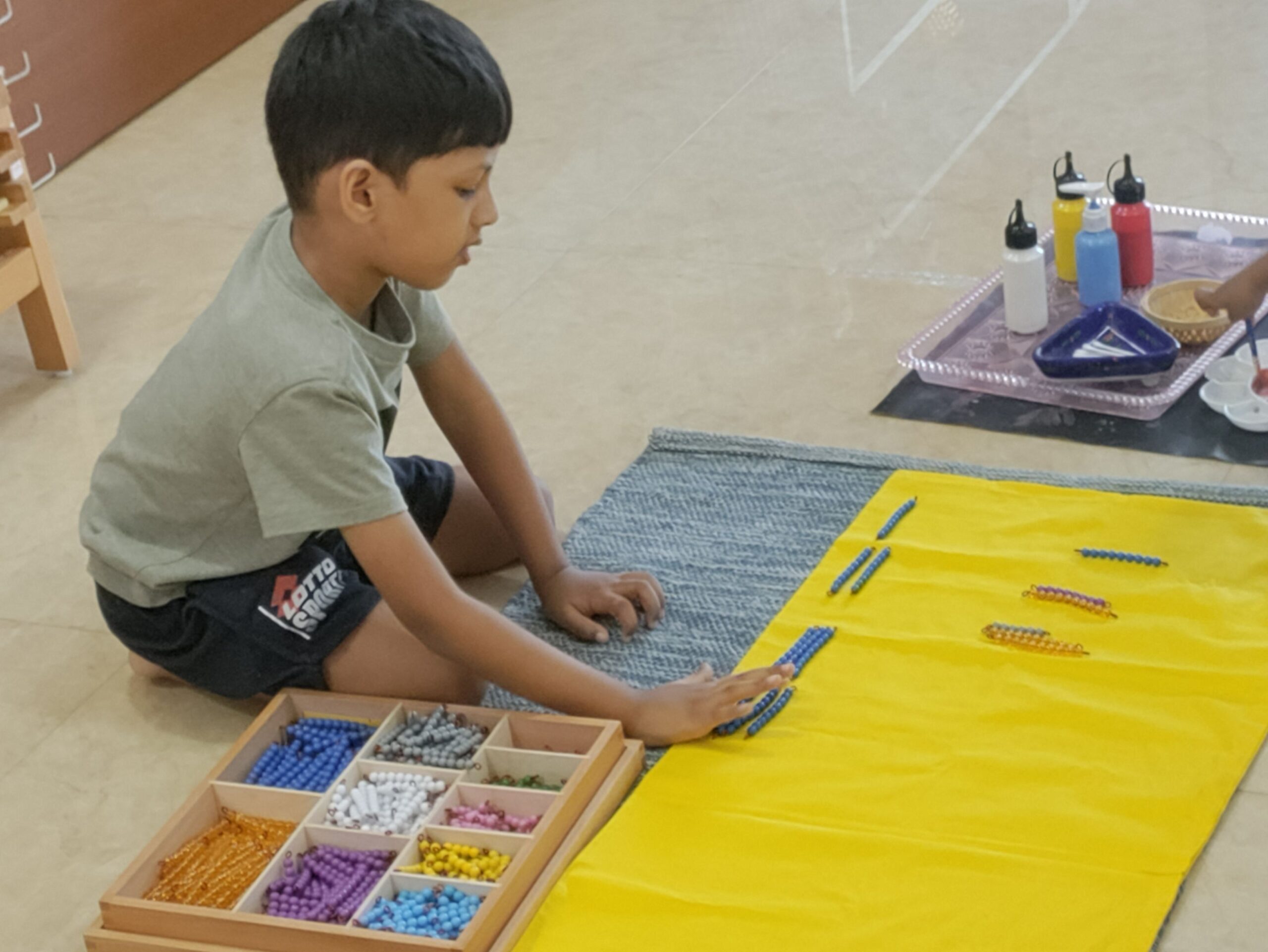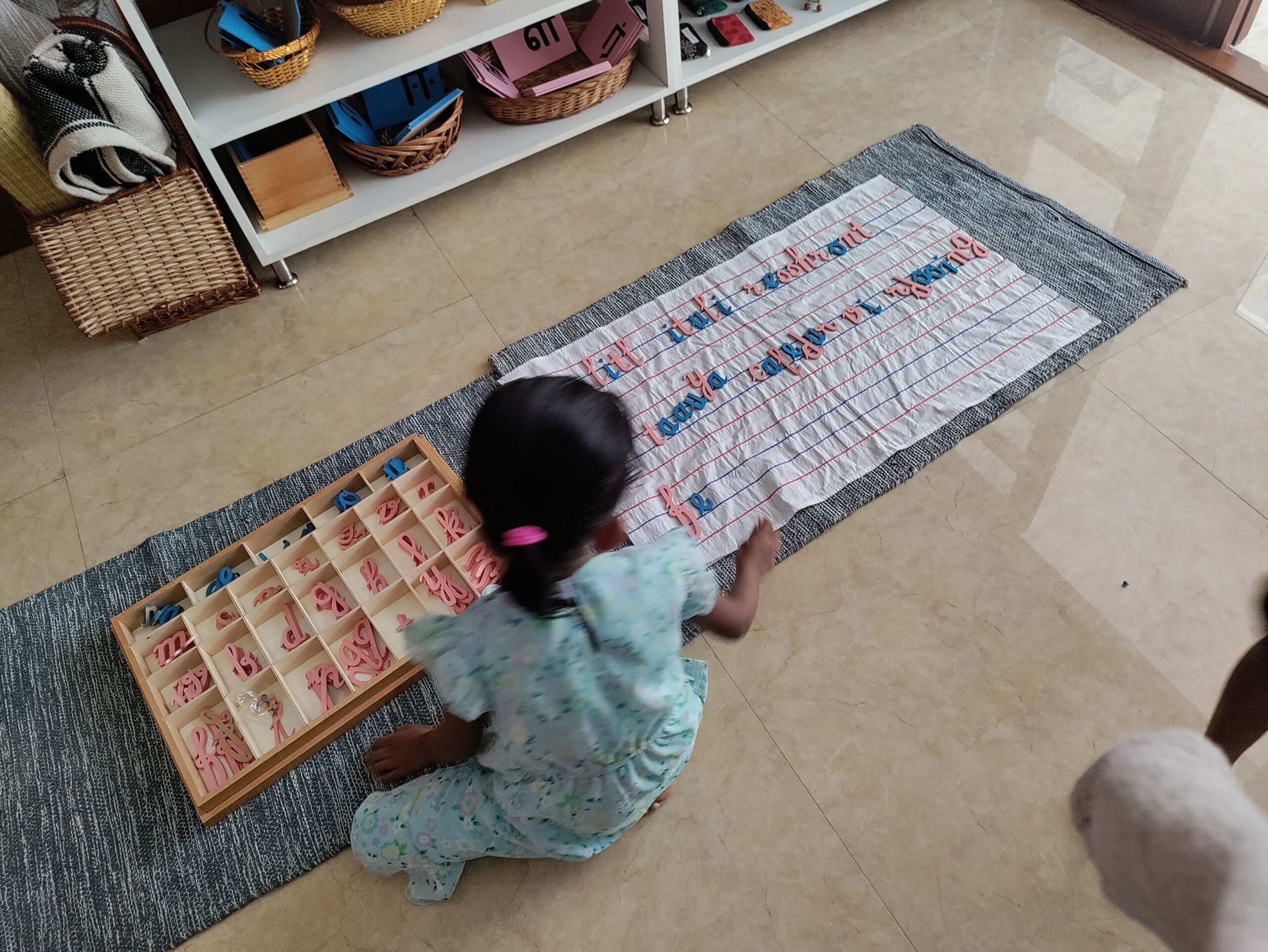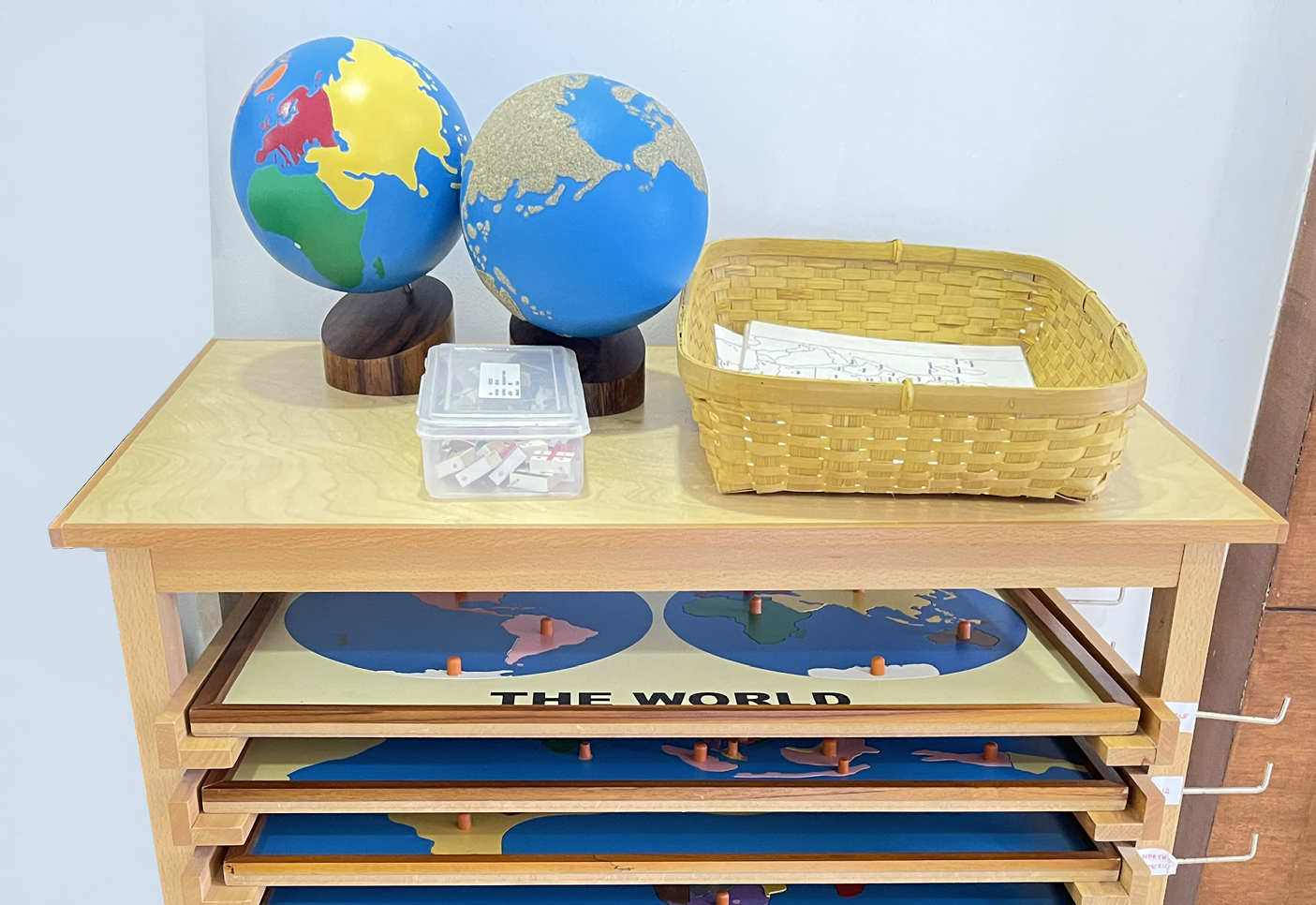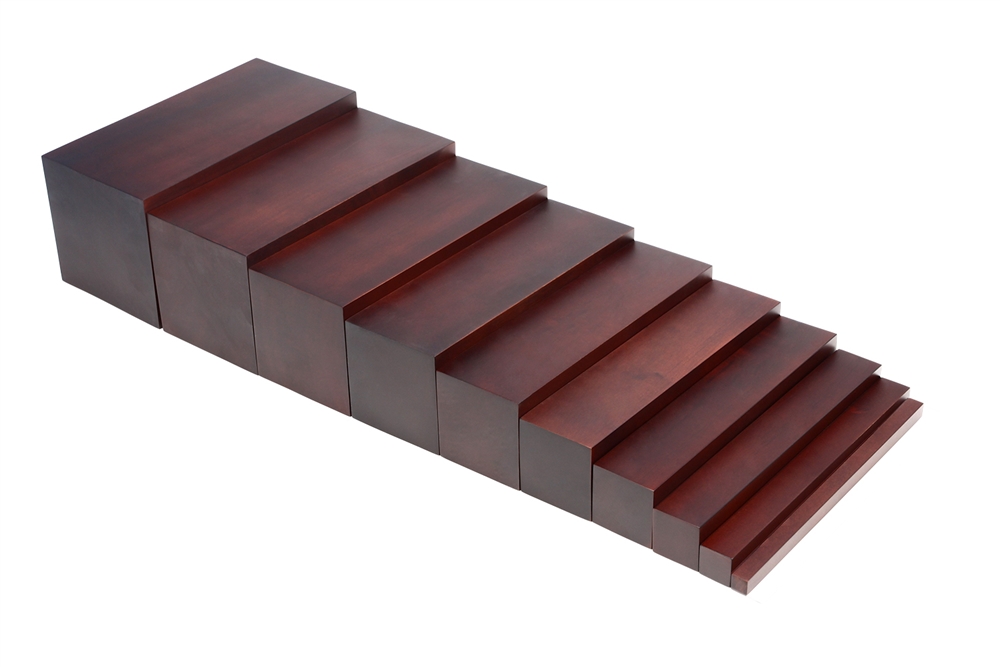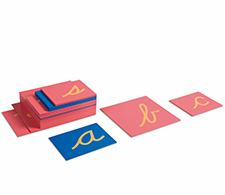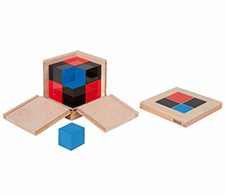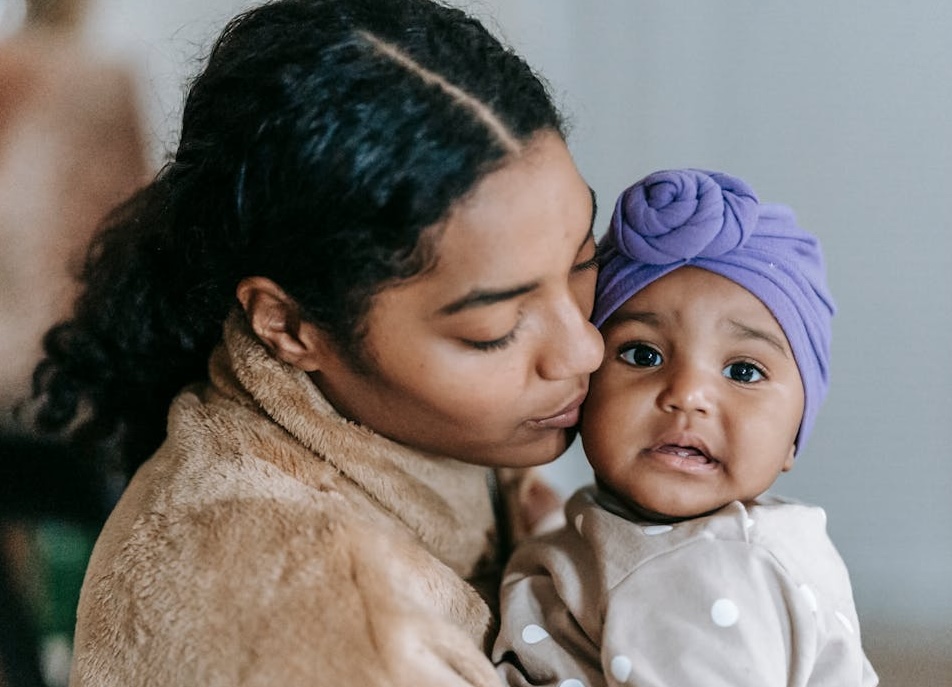We broadly look at development through five key lenses: cognitive, physical, fine motor, social, and emotional.
The Casa Classrooms
Specially designed learning materials are displayed on open shelves, easily accessible to the children. Classrooms also include low sinks, child-sized furniture, cozy spaces for quiet reading, reachable shelves with work available for free choice, and child-sized kitchen utensils so children can eat, prepare, and clean up their snacks on their own.
